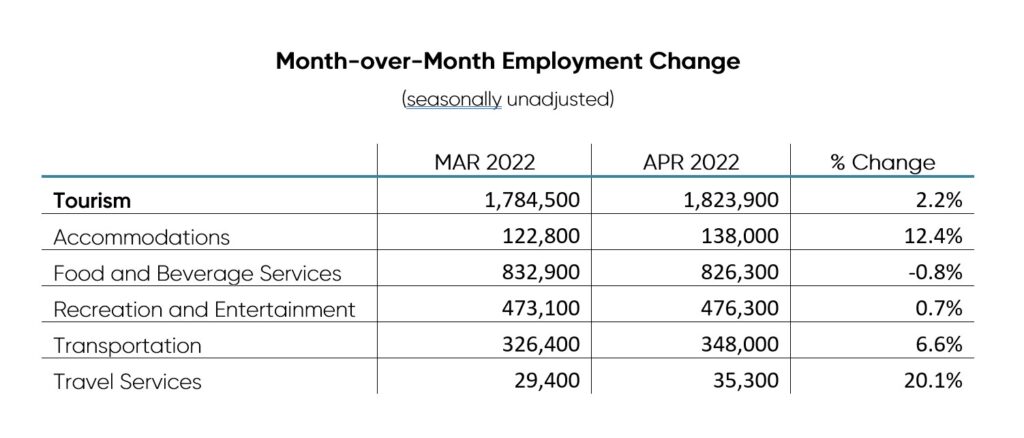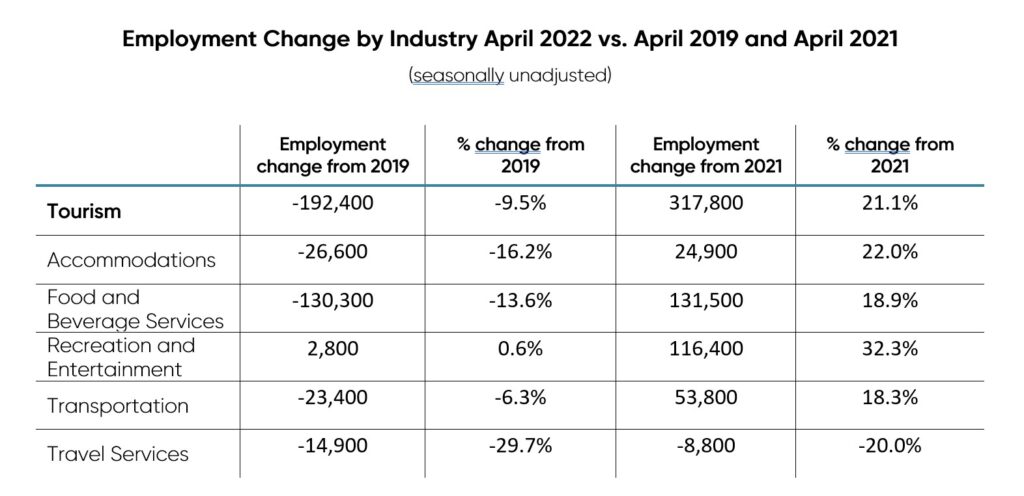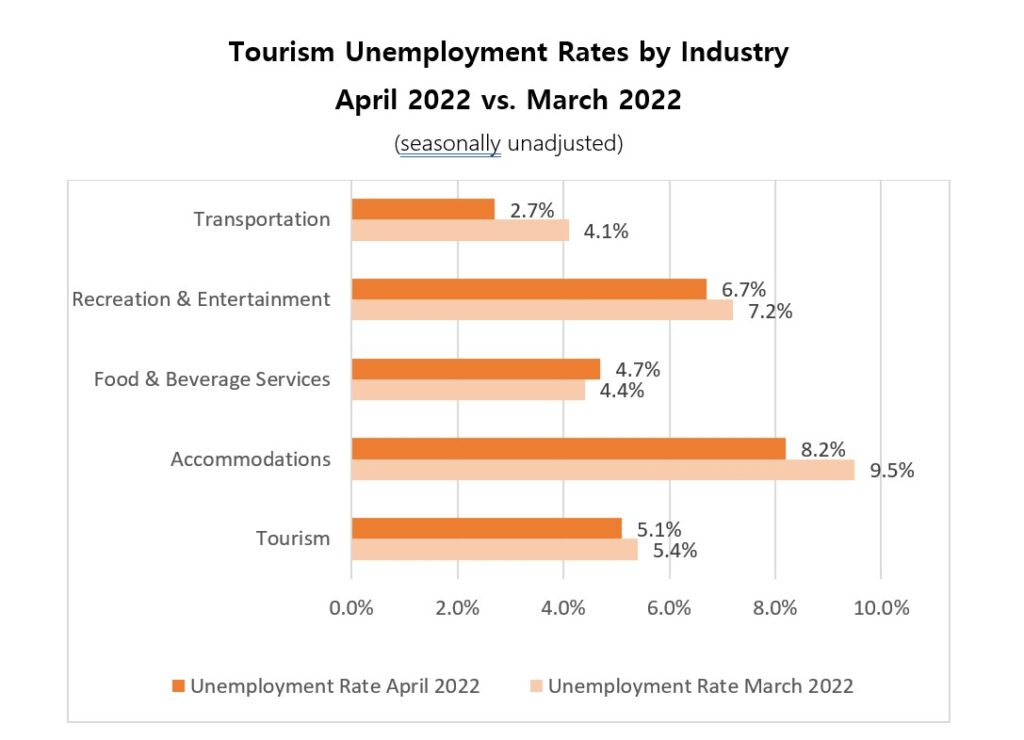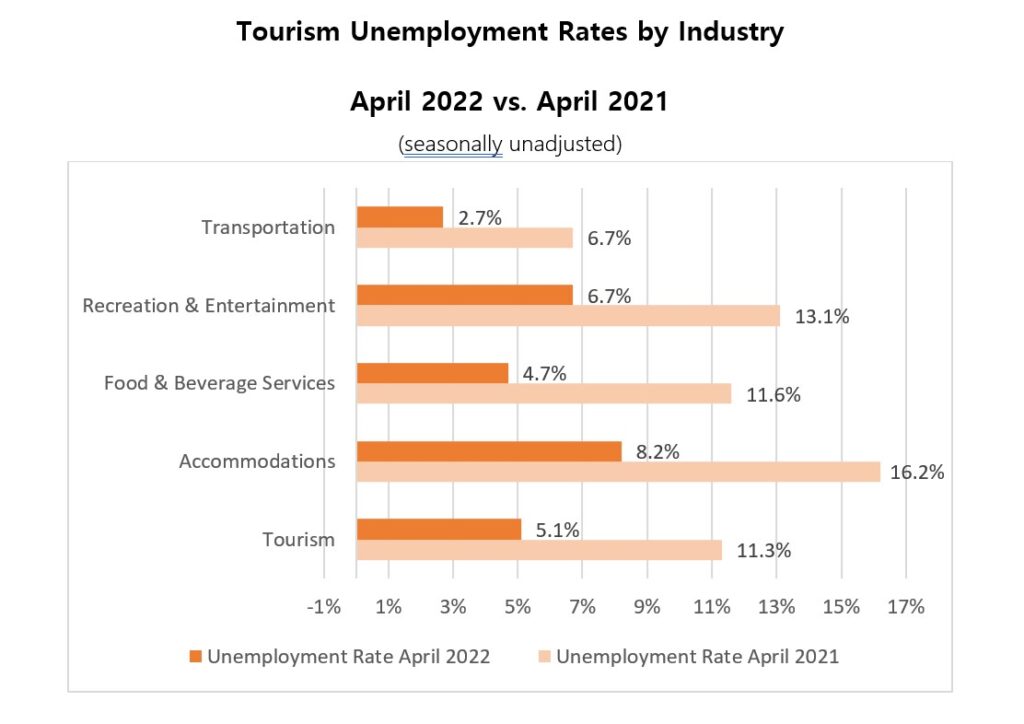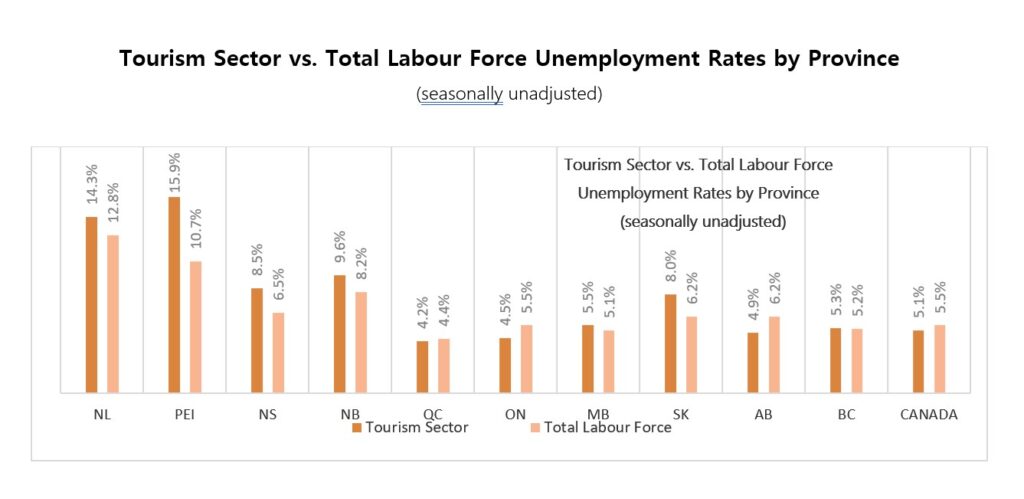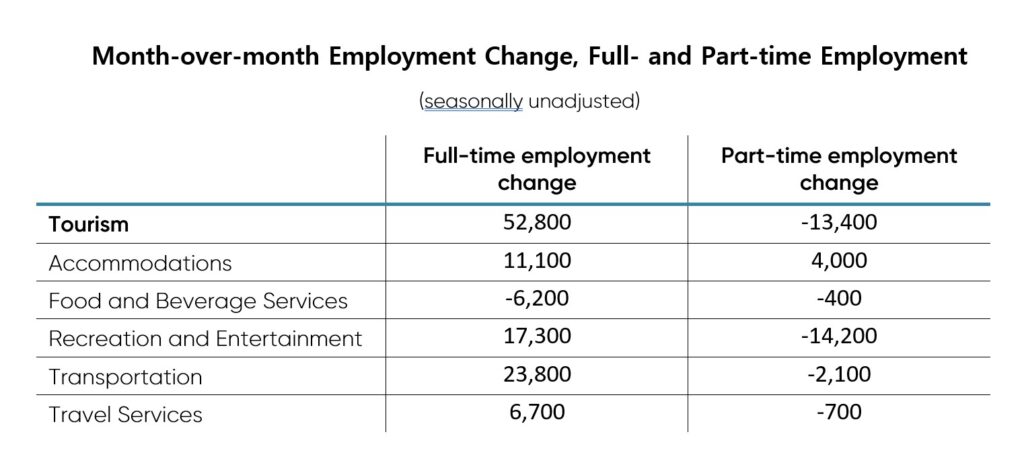Canadian Tourism Labour Market Snapshot
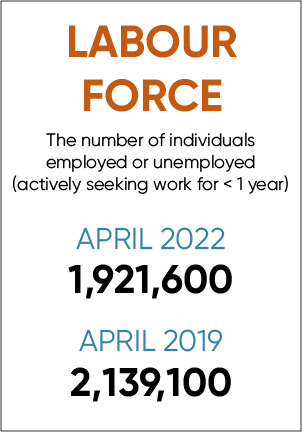 Overall, tourism employment grew slightly (2.2%) from March to April and the unemployment rate improved for all industries except for the food & beverage services industry, which saw a slight uptick. Nevertheless, there was significant improvement in the unemployment rate across all industries when compared to the same month in 2020 and 2021. Likewise, the size of the tourism labour force saw positive gains, with an increase of 1.8% over March to 1.9 million—a significant gain from April 2021 (up 13.2%, from 1.7 million).
Overall, tourism employment grew slightly (2.2%) from March to April and the unemployment rate improved for all industries except for the food & beverage services industry, which saw a slight uptick. Nevertheless, there was significant improvement in the unemployment rate across all industries when compared to the same month in 2020 and 2021. Likewise, the size of the tourism labour force saw positive gains, with an increase of 1.8% over March to 1.9 million—a significant gain from April 2021 (up 13.2%, from 1.7 million).
Labour Force Survey data[1] released for April 2022 reveals that, at 1,921,600 workers, Canada’s tourism labour force has seen a significant gain from April 2021—up 13.2% from 1,697,300.[2] While this is a very positive sign that workers are returning to tourism occupations, the impacts of the COVID-19 pandemic persist as the tourism labour force remains 217,500 workers short of the sizeable pre-pandemic total of 2,139,100 (April 2019).
As such, though many indicators (such as positive changes in the monthly unemployment rate and significant employment gains in the accommodations, transportation, and travel services industries) show indications of imminent workforce recovery, labour shortages have been a pressing challenge for the industry in the first four months of 2022.
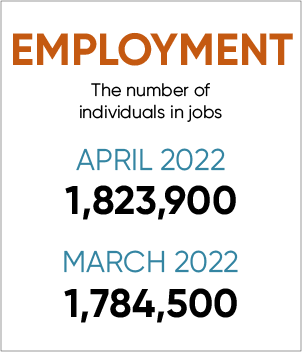 April 2022 Tourism Employment = 9.2% of Canadian Workforce
April 2022 Tourism Employment = 9.2% of Canadian Workforce
Tourism employment comprised 9.4% of the total Canadian labour force for April 2022—slightly above the previous month (9.2%). Tourism employment increased by 39,400 (or 2.2%) from March. Total employment now sits at 1,823,900 (up from 1,784,500 the previous month).
April’s employment numbers saw significant positive change for all industries except food & beverage services (which saw a slight decline of 0.8%). The most significant employment gains were in the accommodations, transportation, and travel services industries. Looking at the same month in previous years, employment in the tourism industries has grown since April 2021 (up 21.1% overall) but continues to lag behind the levels seen pre-pandemic in April 2019 (-9.5%).
April 2022 Tourism Unemployment Rate = 5.1% (less than half of the rate in April 2021)
In April 2022, the unemployment rate in the tourism sector was at 5.1%—lower than the previous month when the unemployment rate stood at 5.4% and slightly better than Canada’s seasonally unadjusted unemployment rate of 5.5%. All industries except for food & beverage services saw a lower unemployment rate than the previous month. All tourism industry groups have reported significantly lower unemployment rates than the same month last year.
On a provincial basis, tourism unemployment rates ranged from 4.2% in Quebec to 15.9% in Prince Edward Island. The seasonally unadjusted unemployment rates for tourism in each province, with the exceptions of Quebec, Ontario, and Alberta, were above the rates reported for the provincial economy.
The overall employment increase in April is due to increases in full-time employment. Part-time employment in the tourism sector declined sharply (-13,400), while full-time employment increased by 52,800 workers.
For a full look at the latest tourism workforce trends, please visit the Tourism Employment Tracker.
[1] SOURCE: Statistics Canada Labour Force Survey, customized tabulations. Based on seasonally unadjusted data collected for the period of April 10 to 16, 2022.
[2] As defined by the Canadian Tourism Satellite Account. The NAICS industries included in the tourism sector are those that would cease to exist or operate at a significantly reduced level of activity as a direct result of an absence of tourism.

